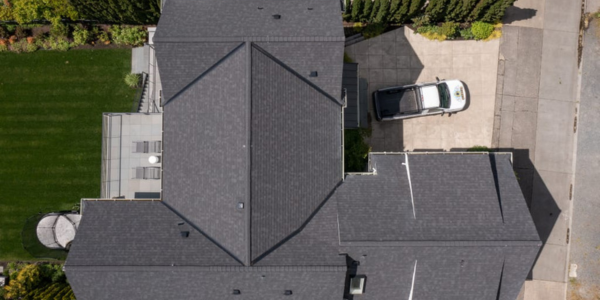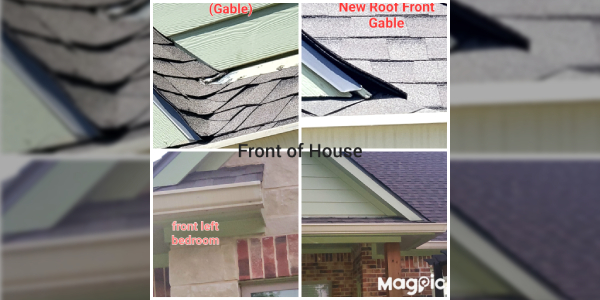Maximizing the lifespan of your roof in wet climates
January 4, 2025 at 8:00 a.m.By Guardian Roofing.
Spot rain damage before it becomes a major issue.
Frequent rainfall creates beautiful greenery and fresh air; however, it can also wear down your roof. In areas with heavy rainfall roof leaks are more common, causing damage to your shingles and seeping into your ceiling. In wet climates, rain, moss and moisture can all cause roof damage, making roof repairs or replacements necessary. To prevent damage, learn about the condition of your roof and what to do when it’s time to have repairs made. Understand how the weather impacts your roof with this guide by Guardian Roofing.
How to know when it’s time for a new roof
If you’re a homeowner, you’re likely aware of how essential a durable, well-maintained roof is. However, figuring out when you need a new roof can be tricky, especially if you’re unfamiliar with the signs of roof deterioration. Here are some key indicators:
1 - Age of your roof
A typical asphalt shingle roof lasts 20-25 years, depending on the type and durability of the roofing material. In regions with milder weather, roofs may last longer, but in places that are constantly exposed to rain and moisture can cause materials to deteriorate faster. If your roof is approaching or has exceeded this age range, it’s time to consider whether a roof replacement may be necessary.
2 - Visible damage
It’s important to visually inspect your roof occasionally, especially after heavy storms or extended periods of rain. Common signs of damage include:
- Missing or curled shingles: The edges of shingles may start to curl upward, or entire shingles may be missing, leaving your roof exposed.
- Cracked shingles: Constant exposure to wind and rain can cause shingles to weaken and crack, which can lead to leaks.
- Granule loss: If you notice a buildup of shingle granules in your gutters or around the base of your home, this is a sign that your roof’s materials are wearing down.
3 - Leaks and water damage
Roof leaks are a significant issue, especially in rainy regions. Signs of water damage inside your home include:
- Water stains on ceilings or walls
- Damp spots in your attic, around skylights or light fixtures and ceilings.
- Mold or mildew growth in your attic and basements
If you frequently find water stains or deal with mold, your roof may have serious problems. While small leaks can often be repaired, multiple or large leaks could be a sign that your roof is reaching the end of its life.
 4 - Moss, algae and mold growth
4 - Moss, algae and mold growth
A moisture-rich climate is the perfect breeding ground for moss and algae on rooftops. While these organisms may not seem like a big deal at first glance, they can cause significant damage. Moss, for example, can grow between shingles and lift them up, allowing water to seep underneath. Over time, this can lead to rot and other structural issues.
In a rainy climate, annual gentle roof cleanings can help prevent moss buildup. It’s important to note that moss can damage the shingles and trap moisture, potentially leading to leaks and often voids the manufacturer’s warranty if not removed. If you notice extensive moss growth that won’t go away or keeps coming back, it may be a sign of deeper roofing problems that require attention.
What is a roof replacement?
A roof replacement involves completely removing the old roofing materials and installing new ones. This process typically includes stripping down to the roof deck (the roof sheathing over the roof framing), inspecting it for any structural damage, correct ventilation, adding adequate insulation and then laying down new materials like shingles, underlayment and flashing.
Roof replacement is a major home improvement project, but it’s often necessary when:
- Your roof has reached the end of its lifespan
- There is widespread damage, such as multiple leaks or missing shingles
- The underlying structure (decking) has been compromised, or there is visible dry rot on the eaves
While replacing a roof can be a significant investment, it provides peace of mind that your home is well-protected from future weather-related damage. It’s especially important where constant rain can exacerbate even minor roofing issues.
Best options for homes in rainy climates
When a roof starts showing signs of wear, many homeowners wonder whether roof repair or a roof replacement is the better option. Both solutions have pros and cons, and the right choice depends on the situation. Let’s break it down.
Roof repair
Roof repair is a cost-effective solution for smaller, isolated issues such as:
- A few missing or damaged shingles
- Small leaks or punctures
- Localized damage (for example, caused by a fallen branch)
- Skylight replacement
- Chimney or masonry repair
Repairs can extend the lifespan of your roof, and when done properly, they can prevent more extensive damage from developing. However, it’s important to recognize that repairs may only be temporary, especially if your roof is older or has widespread issues.
When a roof repair is a good option:
- The damage is minimal and localized
- Your roof is still relatively young (under 15 years)
- You’re planning to sell the house soon and don’t want to invest in a full replacement
Roof replacement 
A full roof replacement, on the other hand, is the best option when:
- Your roof is nearing the end of its lifespan
- There is extensive damage across multiple areas
- You’ve already had several repairs done and are still experiencing problems
Though it’s a larger investment, replacing your roof can save you money in the long run, especially if frequent repairs are needed. A new roof adds significant value to your home, improves energy efficiency and provides long-term protection.
When roof replacement is a better option
- The roof is over 20 years old
- There are persistent issues despite previous repairs
- You plan to stay in your home for many years and want to ensure its well-protected
Living in a rainy heavy climate comes with its own set of challenges when it comes to maintaining your roof. The frequent rain and damp conditions can accelerate wear and tear, making it essential to keep a close eye on the health of your roof.
Original article and image source: Guardian Roofing
Have a question? AskARoofer.
Find your local roofing contractor in the RoofersCoffeeShop® Contractor Directory.











Comments
Leave a Reply
Have an account? Login to leave a comment!
Sign In